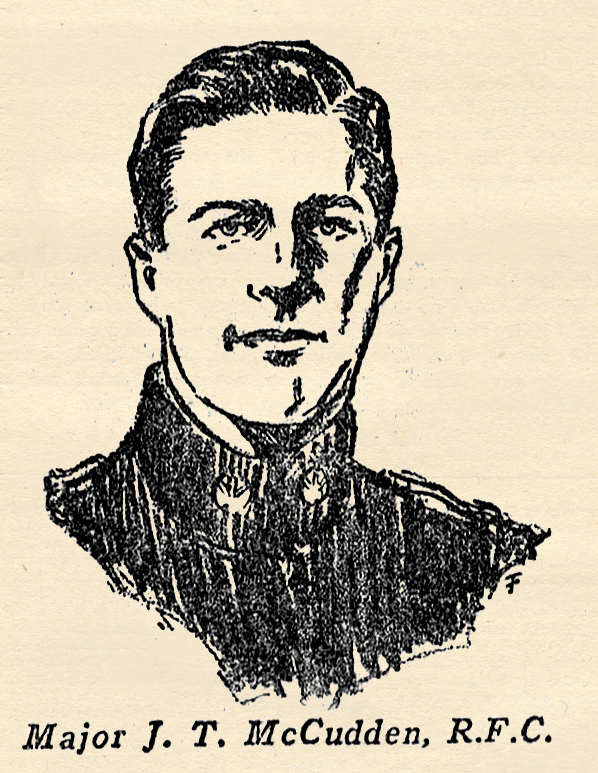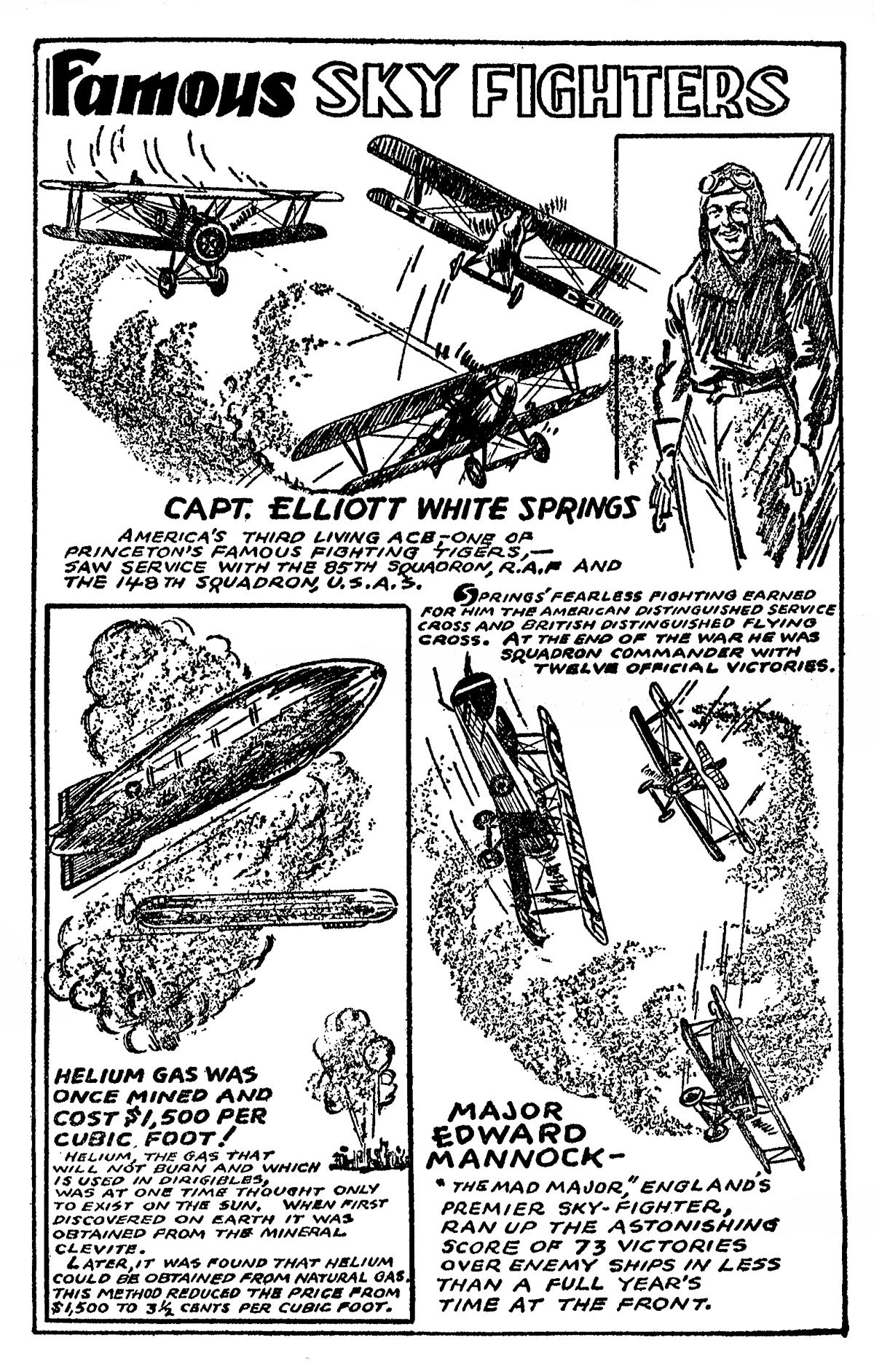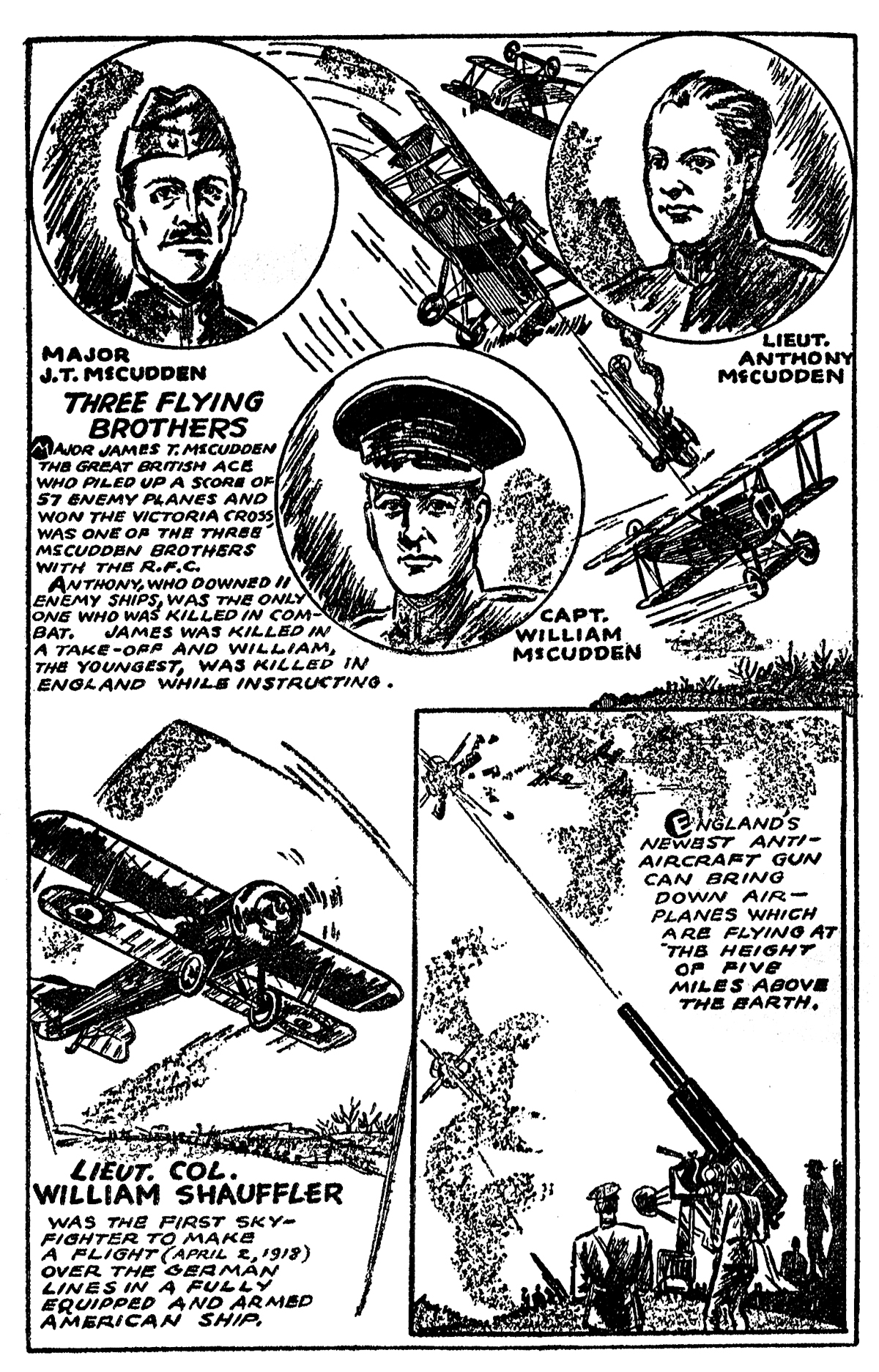Amidst all the great pulp thrills and features in Sky Fighters, they ran a true story feature collected by Ace Williams wherein famous War Aces would tell actual true accounts of thrilling moments in their fighting lives! This time we have Major J.T. McCudden’s most thrilling sky fight!
MAJOR James T. McCudden was  one of the most modest and unassuming of the great flying aces. When the war began he was an engine mechanic with the then recently formed Royal Flying Corps. After flying training he became a Sergeant pilot, and began, piling up the string of victories which eventually placed him at the top of all the British aces. He was progressively promoted to Lieutenant, Captain and Major, and won every medal possible, including the Victoria Cross.
one of the most modest and unassuming of the great flying aces. When the war began he was an engine mechanic with the then recently formed Royal Flying Corps. After flying training he became a Sergeant pilot, and began, piling up the string of victories which eventually placed him at the top of all the British aces. He was progressively promoted to Lieutenant, Captain and Major, and won every medal possible, including the Victoria Cross.
In the air he was absolutely fearless and could handle a plane as well as the best of his fellows. But his ability in using the machine-gun made him superior to all others. He was a crack gunner. He was killed in an accident when taking off to fly back to the front after one of his infrequent leaves. The account below is taken from his book, “Five Years in the Royal Flying Corps.”
ONE AGAINST FIVE
by Major J. T. McCudden, R.F.C. • Sky Fighters, January 1934
I WAS out stalking alone at a 19,000 foot level over Cambrai when I caught sight of five Hun scouts over Bourlon Wood. They were cruising several thousand feet below me. I sized up the situation for a moment, then went down swiftly in a screeching dive, aiming right through the middle of the formation.
After driving through the formation, I pulled up abruptly directly behind and beneath the leader, in his blind spot. I withheld my fire as long as possible, then let go with a short burst at very close range. His ship, an Albatross, went streaking down with plywood strips shredding and crackling from the fuselage. My tracers had almost ripped his fuselage in two. I didn’t have time to watch him crash for the four other scouts jumped me from behind.
I maneuvered quickly, however, and managed to get behind one of them, a Pfalz. One short burst took care of him. He went down in a spiral dive. The other three now began to show signs of alarm. They spread in all directions. I got my guns on an Albatross, pumped a long burst at him, but he spun and got away. I had been so intent firing at him, I didn’t notice the Albatross that slid in behind me pumping lead, until I heard the bullets crackling through the fuselage at my back.
I reversed more quickly than I ever had. Got my sights in line again, and was feeding him a lovely burst from Vickers and Lewis when both my guns stopped. On looking, I saw that the Lewis drum on the top gun was empty, the Vickers belt below was broken.
So there I was with no guns. But my two quick victories had given me confidence. I felt awfully brave, so went chasing after them with no guns. The two Albatross pilots weren’t very lively on either the stick or trigger, and I almost ran into the tail of the remaining Pfalz. I got so close that I could have popped the pilot in the eye with a rotten egg—if I had had any.
I chased those two fellows as far in as Cambrai, then growing cautious because of my failing petrol supply, I turned back and left them. I had got two of the formation and chased the other three away without any bullets. Of course, if the Huns had known that, it wouldn’t have been so easy, the three of them might have ganged on me.
When I got home and made my report my flying mates kidded me about not having a ready supply of rotten eggs handy in the pit.









 one of the most modest and unassuming of the great flying aces. When the war began he was an engine mechanic with the then recently formed Royal Flying Corps. After flying training he became a Sergeant pilot, and began, piling up the string of victories which eventually placed him at the top of all the British aces. He was progressively promoted to Lieutenant, Captain and Major, and won every medal possible, including the Victoria Cross.
one of the most modest and unassuming of the great flying aces. When the war began he was an engine mechanic with the then recently formed Royal Flying Corps. After flying training he became a Sergeant pilot, and began, piling up the string of victories which eventually placed him at the top of all the British aces. He was progressively promoted to Lieutenant, Captain and Major, and won every medal possible, including the Victoria Cross.